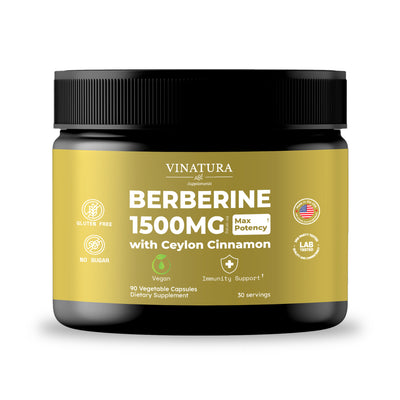
10+ Shilajit Benefits For Males You May Surprised
Found in the Himalayas, Shilajit is a blackish-brown resinous substance that oozes out from rocks during summer months. It is a rich source of minerals, antioxidants, and other essential nutrients, making it a popular natural supplement for both men and women. In this article, we will focus on Shilajit benefits specifically for men. From improving sexual health to boosting energy levels, there are numerous reasons why Shilajit should be a part of every man's daily routine.
Before exploring further, please read the disclaimer located at the end of this webpage.
10+ Shilajit Benefits For Males You May Surprised
Managing Brain Fog and Boosting Cognitive Function
Shilajit contains many trace minerals, fulvic acid, and humic acid, which are known for their ability to cross the blood-brain barrier [1]. These substances help to improve oxygen flow to the brain, thus enhancing cognitive function and reducing mental fatigue. This makes Shilajit a popular choice for individuals struggling with brain fog or looking to boost their mental alertness.
Shilajit has benefits for brain fog and has also been demonstrated to enhance overall brain health.
A study investigating the Shilajit benefits as a nootropic for anxiety and its impact on monoamines in the mouse brain has yielded significant findings. Nootropics encompass natural, semi-synthetic, and synthetic substances renowned for their cognitive-enhancing properties, including improved executive function, focus, memory, and creativity.
Research suggests that Shilajit exhibits nootropic properties. Furthermore, Shilajit has demonstrated anxiolytic and nootropic activity concerning monoamines, neurotransmitters associated with emotional regulation, and specific types of memory.

A study involving Shilajit and Withania somnifera (ashwagandha) discovered that these two herbal remedies affect cholinergic signaling events in the cerebral cortex and prefrontal transmission layers.
Another study examining the effects of Shilajit on cerebral edema concluded that Shilajit may alleviate this condition. This conclusion is supported by assessments of brain water content, blood-brain barrier permeability, intracranial pressure, and neurological outcomes.
You may also like: Shilajit Benefits for Women and Side Effects to Be Aware Of
Mitigating Chronic Fatigue Syndrome and Reducing Stress
Shilajit is also recognized for its potential in alleviating the symptoms of Chronic Fatigue Syndrome (CFS). According to a study by Dinesh Kumar Surapaneni titled, "Shilajit attenuates behavioral symptoms of chronic fatigue syndrome by modulating the hypothalamic-pituitary-adrenal axis and mitochondrial bioenergetics in rats," [2] it was found that Shilajit can mitigate the effects of CFS. This is likely due to the regulation of the Hypothalamic-Pituitary-Adrenal (HPA) axis and the preservation of mitochondrial function and integrity.
Research by Arun Kumar Jaiswal also acknowledges Shilajit's effectiveness in reducing anxiety and stress [3]. Aside from its stress-reducing and memory-enhancing effects, Shilajit possesses other benefits such as antioxidant properties, anti-inflammatory effects, aiding in diabetes management, and acting as an aphrodisiac.
These pharmacological effects are primarily attributed to the presence of compounds such as humic acid, fulvic acid, dibenzo-α-pyrones, chromoproteins, and trace elements. Hence, shilajit's extensive range of benefits makes it a promising natural supplement for overall health maintenance and enhancement.
Read more: 7 Best Shilajit Supplements to Improve Immune System
Alzheimer's Disease Prevention and Management
Shilajit is known for its high fulvic acid content and has been studied for its neuroprotective properties. These properties may be particularly beneficial in slowing the progression of Alzheimer's disease.
Fulvic acid, one of the key compounds in Shilajit, has been shown in studies to help block tau protein accumulation, which is a significant factor in Alzheimer's development [10]. Furthermore, Shilajit has been found to possess anti-inflammatory and antioxidant properties, which can support overall brain health and function [11] [12].

These benefits combined suggest that Shilajit may be a useful supplement in a holistic approach to Alzheimer's prevention and management.
Difficulty Conceiving (Infertility) and Low Testosterone Levels
Shilajit has been used in Ayurvedic medicine for centuries as an aphrodisiac and to improve male fertility, especially in Indian medicine [13]. Modern research has also supported this traditional use, with studies showing that Shilajit can increase sperm count, motility, and testosterone levels.
In a study examining the effects of Shilajit on infertile male patients, it was found that Shilajit significantly improved sperm count, motility, and testosterone levels after 90 days of use [14]. These benefits may be attributed to the presence of fulvic acid and DBP-chromoproteins (DCPs) in Shilajit, which has been linked to improved sperm quality and increased production of testosterone [14].

Advantages of Shilajit for Sexual Health and Erectile Dysfunction
Shilajit has long been utilized in traditional Asian medicine to address male sexual health and infertility. A comprehensive study conducted by Saurabh Nimesh and colleagues explored the potential of herbal remedies like Shilajit for improving Erectile Dysfunction.
Among their findings, Shilajit, along with other herbs such as Ginseng, Ashwagandha, and Yohimbine, was identified as having the capacity to enhance male reproductive capabilities and improve sperm quality [17].
Furthermore, another review focusing on male fertility highlighted Shilajit's ability to elevate testosterone levels in the blood and increase sperm count in both mice and humans. Notably, Shilajit was also found to improve fertility parameters in individuals with infertility caused by cadmium exposure [18].
Anti-Aging Benefits and Increase in Longevity
Aside from its well-known benefits for male health, Shilajit also possesses anti-aging properties. Its high antioxidant content helps to prevent damage caused by free radicals, thereby slowing down the aging process and promoting longevity [15] [19].
Furthermore, A study called "The Health Benefits of Indian Traditional Ayurvedic Rasayana (Anti-aging) Drugs: A Review" has shown that Shilajit benefits from anti-aging along with other ayurvedic such as Amalakayas Rasayana, Triphala, Chyawanprash,... [16], highlighting its potential for increasing longevity in humans as well.
Other Uses Of Shilajit That Male Can Benefit From
Sickness at High Altitudes (High Altitude Sickness)
Some studies have suggested that Shilajit may be beneficial in preventing and treating altitude sickness. A study on rats found that shilajit helped improve oxygen levels and reduce the symptoms of high altitude sickness [20]. Additionally, shilajit has been used traditionally in mountain communities for centuries to combat the effects of high altitudes.
Weight Management and Athletic Performance
Also, Shilajit may manage weight and improve athletic performance for men. A study found that shilajit helped reduce body fat, increase muscle mass, and improve aerobic endurance in overweight individuals [21].

Furthermore, another study found that supplementation with shilajit improved healthy volunteers' muscle strength and exercise performance [22]. This is possibly due to the antioxidant and anti-inflammatory properties of shilajit and its ability to increase testosterone levels and improve energy production in tissues.
Explore more: Is Shilajit Good For Muscle Building? A Scientific Perspective
Insufficient Iron Levels (Iron Deficiency) and Preventing Anemia
Shilajit can be a potent ally in combating iron deficiency and preventing anemia. Rich in fulvic acid and various minerals, Shilajit aids in the absorption of iron and other essential nutrients in the body, thus effectively addressing iron deficiency.
Some studies favor Shilajit's benefits for iron deficiency and anemia:
- Title "Ayurvedic preparations for the treatment of iron deficiency anemia: A short review" - Amit Agrawal, Raghi Raveendran and Sanjana Baranwal [20]
- The title "SHILAJIT IN MANAGEMENT OF IRON DEFICIENCY ANAEMIA" -C.velmurugan, B.Vivek, D.Sheshadri Shekar, SP. Sudha & T. Sundaram [21]
Reducing the Risk of Liver Cancer
Liver cancer is a grave and often fatal illness, commonly associated with chronic infections like Hepatitis B and C. Although studies on the impact of Shilajit on liver health have mainly been conducted on animals, the breadth of research shows promising potential for the advantages of Shilajit in this context.
- A study led by Ebtihaj J. Jambi and colleagues found that Shilajit enhances the efficacy of chemotherapy and minimizes liver damage and body weight loss due to metastasis in bone cancer [22].
- Another study involving mice with fatty liver disease resulting from a high-fat diet discovered that Shilajit improves histopathological changes in the liver associated with non-alcoholic fatty liver disease (NAFLD), suggesting its potential as a therapeutic agent [23].
- Further research on mice with fatty liver disease revealed Shilajit's liver-protective mechanism through the regulation of serum IL-1β, TNF-α, IL-10, adipokines, resistin, and a reduction in HOMA-IR, indicating its potential benefits on liver health [24].
These studies bolster the credibility of Shilajit's liver benefits, offering hope for new therapeutic solutions for liver ailments.
Reducing the Likelihood of Obesity and Diabetes
A study on obese mice with elevated blood lipids concluded the effectiveness of Shilajit in addressing obesity when used at a dose of 200mg for 4-8 weeks [25].
Another study examining Shilajit's impact on diabetes at three doses of 50mg, 100mg, and 200mg/kg/day for 4 weeks all observed a significant reduction in blood glucose levels. The 100 mg/kg/day dose was the most effective [26].
In addition to these studies, several others indirectly allude to the potential efficacy of Shilajit for both obesity and diabetes.
- Inorganic Analysis and Antioxidant Activity of Shilajit - Fadheela Al-Salman, Ali Ali Redha, Zahraa AI-Zaimoor [27].
- Shilajit attenuates streptozotocin induced diabetes mellitus and decreases pancreatic islet superoxide dismutase activity in rats - Salil K. Bhattacharya [28].
- The spermatogenic and oncogenic effects of chronically administered Shilajit to rats - Jeong-Sook Park, Gee-Young Kim, Kun Han [29].
Offering Antiviral Properties

Shilajit is believed to possess antiviral properties, making it a potential natural remedy for viral infections. Although clinical studies validating this claim are limited, traditional anecdotal evidence often alludes to its use in warding off common viral conditions.
- Shilajit can also be a beneficial supplement for managing inflammation due to its rich fulvic acid content. Fulvic acid has demonstrated anti-inflammatory properties in various research, suggesting that Shilajit might effectively reduce inflammation in the body [30].
- The possible anti-inflammatory benefits of Shilajit also contribute to its potential in managing conditions characterized by chronic inflammation, such as arthritis and inflammatory bowel disease [30].
Shilajit Side Effects For Male Health
Numerous studies have suggested that Shilajit is relatively safe and often has no side effects, as indicated by several studies:
- Shilajit: A Natural Phytocomplex with Potential Procognitive Activity - Carlos Carrasco-Gallardo, Leonardo Guzmán, and Ricardo B. Maccioni [8].
- Safety and Efficacy of Shilajit (Mumie, Moomiyo) - Sidney J. Stohs [1].
However, using any medication or herbal remedy requires caution to avoid unnecessary side effects. The benefits and safety of these natural remedies are still being researched, and some aspects remain contentious.
Regarding Shilajit, we found limited literature mentioning potential side effects, such as:
- The risk of poisoning from some unprocessed Ayurvedic products.
- Increased heart rate [31].
Shilajit Dosage For Male Health

The correct dosage of Shilajit can vary depending on the user's age, health condition, and intended use.
According to some studies conducted on animals, a safe dose for humans is approximately 300-500 mg per day [31].
However, it is always essential to consult with a healthcare professional before starting any new supplement or herbal remedy, as they can provide personalized recommendations based on your specific needs and health status.
Conclusion
In conclusion, while Shilajit shows promising potential in various areas of male health, more research is needed to understand its effects and potential side effects fully. It is essential to use it with caution and under the guidance of a healthcare professional for optimal benefits and safety.
Frequently Asked Questions
Is It Safe To Consume Shilajit Daily?
It is generally considered safe to consume Shilajit in the recommended dosage, typically around 300-500 mg daily for adults. However, it's essential to consult a healthcare professional before starting any new supplement regimen.
Does Shilajit Increase Size?
There is no scientific evidence to suggest that Shilajit increases in size. Its benefits are generally related to energy levels, cognitive health, and potentially aiding in treating certain diseases. Always consult a healthcare professional before starting any new health supplement.
Does Shilajit Work For Treating Erectile Dysfunction?
While Shilajit has traditionally been used to support male reproductive health, scientific research on its specific effects on erectile dysfunction is limited. However, some studies suggest it might promote testosterone levels, potentially improving erectile function.
Does Shilajit Contribute To Increased Strength?
While some evidence suggests that Shilajit can enhance performance and reduce fatigue, it's unclear whether it directly contributes to increased physical strength. More research is needed to understand the potential benefits of Shilajit in this regard.
What Causes Shilajit To Provide A Sense Of Well-Being?
Shilajit's potential to provide a sense of well-being can be attributed to its rich content of fulvic acid and other organic compounds. These compounds are known for their cognitive-enhancing properties and the ability to reduce stress levels, ultimately promoting mental clarity and a general sense of wellness.
Is Ashwagandha Or Shilajit A Superior Option?
Both Ashwagandha and Shilajit have unique benefits and are superior in their ways. Ashwagandha is renowned for stress management and promoting mental well-being, while Shilajit is known for boosting energy and overall wellness. The choice between the two depends on individual health conditions and needs.
Should I Take Shilajit In The Morning Or Before Bedtime?
Shilajit can be taken before bedtime or in the morning based on personal preference and tolerance. However, due to its potential energy-enhancing properties, some individuals may find it more beneficial to take in the morning.
References
- [1] Stohs, S. J. (2013). Safety and Efficacy of Shilajit (Mumie, Moomiyo). Phytotherapy Research, 28(4), 475–479. https://doi.org/10.1002/ptr.5018
- [2] Arun Kumar Jaiswal, & Bhattacharya, S. K. (1992). Effects of Shilajit on memory, anxiety and brain monoamines in rats. ResearchGate; Medknow Publications. https://www.researchgate.net/publication/275715043_Effects_of_Shilajit_on_memory_anxiety_and_brain_monoamines_in_rats
- [3] Reinhard Schliebs, Liebmann, A., Bhattacharya, S. K., Kumar, A., Shibnath Ghosal, & Volker Bigl. (1997). Systemic administration of defined extracts from Withania somnifera (Indian ginseng) and Shilajit differentially affects cholinergic but not glutamatergic and GABAergic markers in rat brain. Neurochemistry International, 30(2), 181–190. https://doi.org/10.1016/s0197-0186(96)00025-3
- [4] Khaksari, M., Mahmmodi, R., Shahrokhi, N., Shabani, M., Joukar, S., & Aqapour, M. (2013). The Effects of Shilajit on Brain Edema, Intracranial Pressure and Neurologic Outcomes following the Traumatic Brain Injury in Rat. Iranian Journal of Basic Medical Sciences, 16(7), 858–864. https://www.ncbi.nlm.nih.gov/pmc/articles/PMC3758058/
- [5] Dinesh Kumar Surapaneni, Rama, S., Kumari, P., Gangineni Ravi Teja, Muruganandam Veeraragavan, & Krishnamurthy, S. (2012). Shilajit attenuates behavioral symptoms of chronic fatigue syndrome by modulating the hypothalamic–pituitary–adrenal axis and mitochondrial bioenergetics in rats. Journal of Ethnopharmacology, 143(1), 91–99. https://doi.org/10.1016/j.jep.2012.06.002
- [6] Arun Kumar Jaiswal, & Bhattacharya, S. K. (1992). Effects of Shilajit on memory, anxiety and brain monoamines in rats. ResearchGate; Medknow Publications. https://www.researchgate.net/publication/275715043_Effects_of_Shilajit_on_memory_anxiety_and_brain_monoamines_in_rats
- [7] Mishra, T., Dhaliwal, H. S., Singh, K., & Singh, N. (2019). Shilajit (Mumie): Current Status of Biochemical, Therapeutic and Clinical Advances. Current Nutrition & Food Science, 15(2), 104–120. https://doi.org/10.2174/1573401313666170823160217
- [8] Carrasco-Gallardo, C., Guzmán, L., & Maccioni, R. B. (2012). Shilajit: A Natural Phytocomplex with Potential Procognitive Activity. International Journal of Alzheimer’s Disease, 2012, 1–4. https://doi.org/10.1155/2012/674142
- [9] Carrasco-Gallardo, C., Farías, G., Fuentes, P., Crespo, F., & Maccioni, R. B. (2012). Can Nutraceuticals Prevent Alzheimer’s Disease? Potential Therapeutic Role of a Formulation Containing Shilajit and Complex B Vitamins. Archives of Medical Research, 43(8), 699–704. https://doi.org/10.1016/j.arcmed.2012.10.010
- [10] Das, R., Rauf, A., Akhter, S., Mohammad Nazmul Islam, Talha Bin Emran, Mitra, S., Khan, I. N., & Mubarak, M. S. (2021). Role of Withaferin A and Its Derivatives in the Management of Alzheimer’s Disease: Recent Trends and Future Perspectives. Molecules, 26(12), 3696–3696. https://doi.org/10.3390/molecules26123696
- [11] Victoria, S., Rajkumar, K., Ravikumar Nesamani, Saravana Karthikeyan Balasubramanian, & Sekar Mahalaxmi. (2020). In vitro assessment of cytotoxicity and anti-inflammatory properties of shilajit nutraceutical: A preliminary study. Journal of Interdisciplinary Dentistry, 10(1), 24–24. https://doi.org/10.4103/jid.jid_2_20
- [12] Lawley S, Gupta Rc, Goad Jt, Canerdy Td, & Sr, K. (2013). Anti-Inflammatory and Anti-Arthritic Efficacy and Safety of Purified Shilajit in Moderately Arthritic Dogs. https://www.semanticscholar.org/paper/Anti-Inflammatory-and-Anti-Arthritic-Efficacy-and-Lawley-Rc/826f67184e8a41a29668a1609e2a178ba3bbcb65?p2df
- [13] Raghav Kumar Mishra, Jain, A., & Shio Kumar Singh. (2018). Profertility effects of Shilajit on cadmium-induced infertility in male mice. Andrologia, 50(8), e13064–e13064. https://doi.org/10.1111/and.13064
- [14] Biswas, T. K., Pandit, S., Mondal, S., Biswas, S., Uhlinova, J., Ghosh, T., Tripathi, P., Debnath, P. K., Auddy, R. G., & B Auddy. (2010). Clinical evaluation of spermatogenic activity of processed Shilajit in oligospermia. Andrologia, 42(1), 48–56. https://doi.org/10.1111/j.1439-0272.2009.00956.x
- [15] Singh Gangwar, S., Thakur, R., & Sharma, R. (2017). Shilajit A Medicinal Mystery to Cure the Un-Cure Disease. Imperial Journal of Interdisciplinary Research (IJIR), 3(1), 2454–1362. https://www.serravit.com.tr/wp-content/uploads/2020/08/Shilajit-A-Medicinal-Mystery-to-Cure-the-Un-Cure-Disease.pdf
- [16] Manjeshwar Shrinath Baliga, Sharake Meera, Arnadi Ramachandrayya Shivashankara, Princy Louis Palatty, & Raghavendra Haniadka. (2015). The Health Benefits of Indian Traditional Ayurvedic Rasayana (Anti-aging) Drugs. Elsevier EBooks, 151–161. https://doi.org/10.1016/b978-0-12-418680-4.00016-6
- [17] Fadheela Al-Salman, Ali Ali Redha, & Zahraa Al-Zaimoor. (2020, June 30). Inorganic Analysis and Antioxidant Activity of Shilajit. ResearchGate; unknown. https://www.researchgate.net/publication/342921985_Inorganic_Analysis_and_Antioxidant_Activity_of_Shilajit
- [18] Mishra, R., Prakash Verma, H., Singh, N., & Singh, S. (2012). MALE INFERTILITY: LIFESTYLE AND ORIENTAL REMEDIES. 56, 93–101. https://citeseerx.ist.psu.edu/document?repid=rep1&type=pdf&doi=617dfe99f9b9ad53430522ad7de681f4e6adfbef
- [19] Pant, K., Singh, B., & Thakur, N. (2012). Shilajit: A Humic Matter Panacea for Cancer. Available Online on Www.ijtpr.com International Journal of Toxicological and Pharmacological Research, 4(2), 17–25. https://dspace.cus.ac.in/jspui/bitstream/1/4138/1/shilajit-a-panacea-for-cancer.pdf
- [20] Agrawal, A., Raghi Raveendran, & Sanjana Baranwal. (2022). Ayurvedic preparations for the treatment of iron deficiency anemia: A short review. Indian Journal of Integrative Medicine, 11–16. https://mansapublishers.com/index.php/ijim/article/view/3077
- [21] Chinnasamy Velmurugan, B Vivek, Shekar, S. B., & Sundaram, T. (2010). Shilajit in management of iron deficiency anaemia. ResearchGate; unknown. https://www.researchgate.net/publication/288266508_Shilajit_in_management_of_iron_deficiency_anaemia
- [22] Jambi, E. J., & Alshubaily, F. A. (2022). Shilajit potentiates the effect of chemotherapeutic drugs and mitigates metastasis induced liver and kidney damages in osteosarcoma rats. Saudi Journal of Biological Sciences, 29(9), 103393–103393. https://doi.org/10.1016/j.sjbs.2022.103393
- [23] Baran Ghezelbash, Nader Shahrokhi, Khaksari, M., Firouz Ghaderi Pakdel, & Gholamreza Asadikaram. (2020). Hepatoprotective effects of Shilajit on high fat-diet induced non-alcoholic fatty liver disease (NAFLD) in rats. Hormone Molecular Biology and Clinical Investigation, 41(1). https://doi.org/10.1515/hmbci-2019-0040
- [24] Baran Ghezelbash, Nader Shahrokhi, Khaksari, M., Gholamreza Asadikaram, Shahrokhi, M., & Shirazpour, S. (2022). Protective Roles of Shilajit in Modulating Resistin, Adiponectin, and Cytokines in Rats with Non-alcoholic Fatty Liver Disease. Chinese Journal of Integrative Medicine, 28(6), 531–537. https://doi.org/10.1007/s11655-022-3307-3
- [25] Saqib, M., Malik, R., & Kausar, S. (n.d.). Effect of Shilajit on Obesity in Hyperlipidemic Albino Rats. https://pjmhsonline.com/2016/july_sep/pdf/1019.pdf
- [26] Effect of shilajit on blood glucose and lipid profile in alloxan-induced diabetic rats. (2023). Indian Journal of Pharmacology, 36(6), 373. https://www.ijp-online.com/article.asp?issn=0253-7613;year=2004;volume=36;issue=6;spage=373;epage=376;aulast=Trivedi
- [27] Fadheela Al-Salman, Ali Ali Redha, & Zahraa Al-Zaimoor. (2020, June 30). Inorganic Analysis and Antioxidant Activity of Shilajit. ResearchGate; unknown. https://www.researchgate.net/publication/342921985_Inorganic_Analysis_and_Antioxidant_Activity_of_Shilajit?enrichId=rgreq-46d6ed5e5310ea98589dadd1026a914b-XXX&enrichSource=Y292ZXJQYWdlOzM0MjkyMTk4NTtBUzo5MTMxODcxNzIwMDc5MzdAMTU5NDczMjE5NjEzNg%3D%3D&el=1_x_3&_esc=publicationCoverPdf
- [28] Bhattacharya, S. K. (1995). Shilajit attenuates streptozotocin induced diabetes mellitus and decrease in pancreatic islet superoxide dismutase activity in rats. Phytotherapy Research, 9(1), 41–44. https://doi.org/10.1002/ptr.2650090110
- [29] Jeong Sook Park, Kim, G.-Y., & Han, K. (2006). The spermatogenic and ovogenic effects of chronically administered Shilajit to rats. Journal of Ethnopharmacology, 107(3), 349–353. https://doi.org/10.1016/j.jep.2006.03.039
- [30] Bhavsar, S. K., Thaker, A. M., & Malik, J. K. (2016). Shilajit. Elsevier EBooks, 707–716. https://doi.org/10.1016/b978-0-12-802147-7.00051-6
- [31] Nandkishor Gaikwad, Panat, A. V., Deshpande, M. S., K Ramya, Khalid, P. U., & Augustine, P. C. (2012). Effect of shilajit on the heart of Daphnia: A preliminary study. Journal of Ayurveda and Integrative Medicine, 3(1), 3–3. https://doi.org/10.4103/0975-9476.93938
- [32] Carrasco-Gallardo, C., Guzmán, L., & Maccioni, R. B. (2012). Shilajit: A Natural Phytocomplex with Potential Procognitive Activity. International Journal of Alzheimer’s Disease, 2012, 1–4. https://doi.org/10.1155/2012/674142
- [33] Stohs, S. J. (2013). Safety and Efficacy of Shilajit (Mumie, Moomiyo). Phytotherapy Research, 28(4), 475–479. https://doi.org/10.1002/ptr.5018
Author

Product Disclaimer
The dietary supplement products mentioned on this website are formulated based on scientific research and adhere to FDA guidelines for dietary supplements. However, the content of the articles has not been evaluated by the Food and Drug Administration (FDA) and is not intended to promote or endorse any specific product. Any products sold on this website are not intended to diagnose, treat, cure, or prevent any disease.
Opinions and Endorsements
Any claims, statements, or opinions expressed in the articles are those of the author(s) and do not necessarily reflect the views or opinions of the manufacturers of the dietary supplement products. The products sold on this website are separate from the content of the articles and are not directly endorsed or associated with the information presented here.
Liability Disclaimer
The author(s) of the articles, website, and manufacturers of the dietary supplement products do not assume any liability for any potential consequences arising from the use of the information provided in the articles. It is recommended that individuals consult with a qualified healthcare professional before making any dietary or lifestyle changes, including the use of dietary supplements.
Product Usage
Please refer to the product labels and packaging for specific usage instructions and guidelines for the dietary supplement products sold on this website.
Customer Support
For any concerns or questions regarding the dietary supplement products, please contact our customer support team, who will be more than happy to assist you.










Leave a Comment
Be the first to comment.
What do you think?